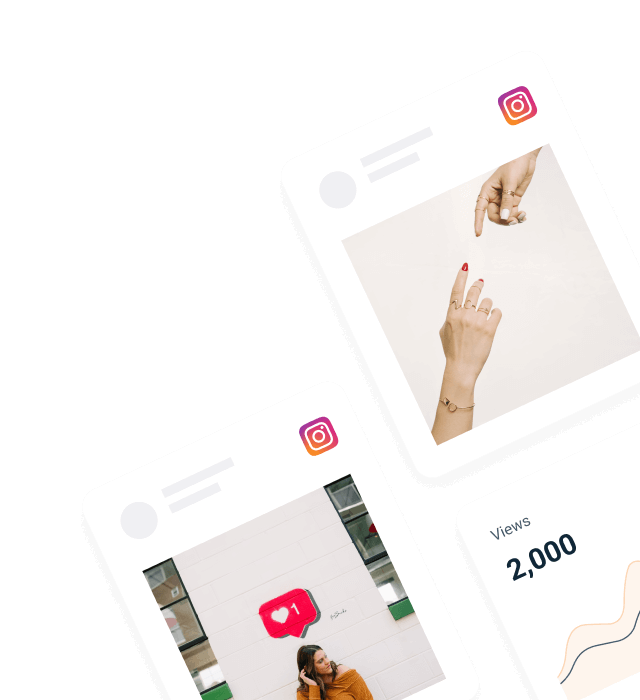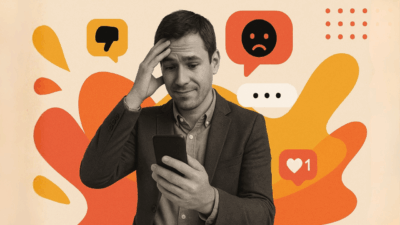Let’s face it – social media is everywhere these days, and healthcare organizations are jumping on board to connect with patients and build their brand. The numbers don’t lie: 55% of adults use social media to find health information. That’s a huge opportunity for healthcare practices to really connect with their communities. But here’s the catch – the healthcare world has some tricky challenges when it comes to social media marketing, especially around keeping HIPAA compliance in check while making the most of these platforms.
If you work in healthcare, you know HIPAA inside and out. The Health Insurance Portability and Accountability Act is all about keeping patient data private and secure. But here’s the thing – while HIPAA compliance is super important for protecting patient privacy, it can make healthcare organizations nervous about diving into social media marketing. They’re not sure how to do it safely.
So what’s the solution? This guide will show you exactly how healthcare organizations can dive into social media marketing without breaking HIPAA rules. We’ll make sure patient privacy stays protected while still building those important community connections.
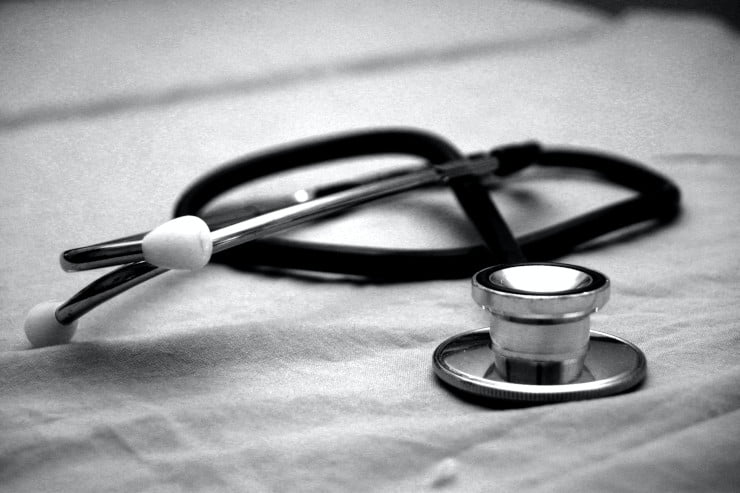
The Benefits of Healthcare Social Media Marketing
Why should healthcare organizations even bother with social media marketing? Well, the benefits are pretty impressive. When medical practices and healthcare organizations get their social media game right, they can see real results. Understanding these benefits helps organizations see why investing in a solid social media presence makes sense – as long as they stay compliant with healthcare regulations. A good social media strategy can actually make a big difference in patient care and engagement.
Patient Acquisition and Engagement
Here’s the thing about social media – it’s like having a direct line to your patients. Healthcare organizations can reach out to potential patients and their target audience in ways that just weren’t possible before. When you create content that actually speaks to people and build real communities, healthcare practices can form genuine connections with their local communities and beyond. This isn’t just about posting updates – it’s about having a direct communication channel where you can share real-time updates about services, health tips, and practice information that actually influences patient decisions. Plus, healthcare organizations can use social media aggregation tools to make content management way easier and keep messaging consistent across all their social media channels.
Brand Reputation Building
Think about it – when people see a healthcare organization with a solid social media presence, they start to trust them more. It’s all about building and keeping that brand reputation by being open and actually engaging with your community. When you share educational content that helps people, respond to patient questions, and show the human side of healthcare, you’re building trust and credibility. People want to know there are real humans behind the healthcare organization, not just a faceless institution.
Crisis Communication and Public Health Awareness
Remember when COVID hit? Social media became absolutely essential for healthcare organizations to get accurate information out there and address community concerns. When health emergencies or public health crises happen, social media turns into a lifeline for spreading the right information and dealing with community worries. Healthcare organizations can use their social media platforms to share updates in real-time, bust through misinformation, and give people guidance when things get tough. The numbers back this up – a 2025 study by the Kaiser Family Foundation found that 55% of adults use social media to find health information and advice, and this usage is even higher among younger adults and minority groups.
Patient Education and Health Literacy
Here’s something really cool about social media – it’s perfect for patient education. Healthcare organizations can share useful health information, preventive care tips, and wellness guidance in a way that’s actually engaging. This isn’t just about posting dry medical facts – it’s about creating educational content that helps improve health literacy while showing people that your organization is a trusted source of medical information. Healthcare professionals can use social media content to deliver updates in real-time and share educational materials that actually support patient care and help with decision-making.
Community Building and Support
One of the best things about healthcare social media marketing? It lets organizations create supportive communities where patients can actually connect, share their experiences, and get encouragement from others going through similar situations. This community aspect is huge – it builds patient loyalty and gives people additional value beyond just the traditional healthcare services. When healthcare organizations build a strong social media presence, they can position themselves as trusted leaders in their communities while making sure patient confidentiality stays protected.
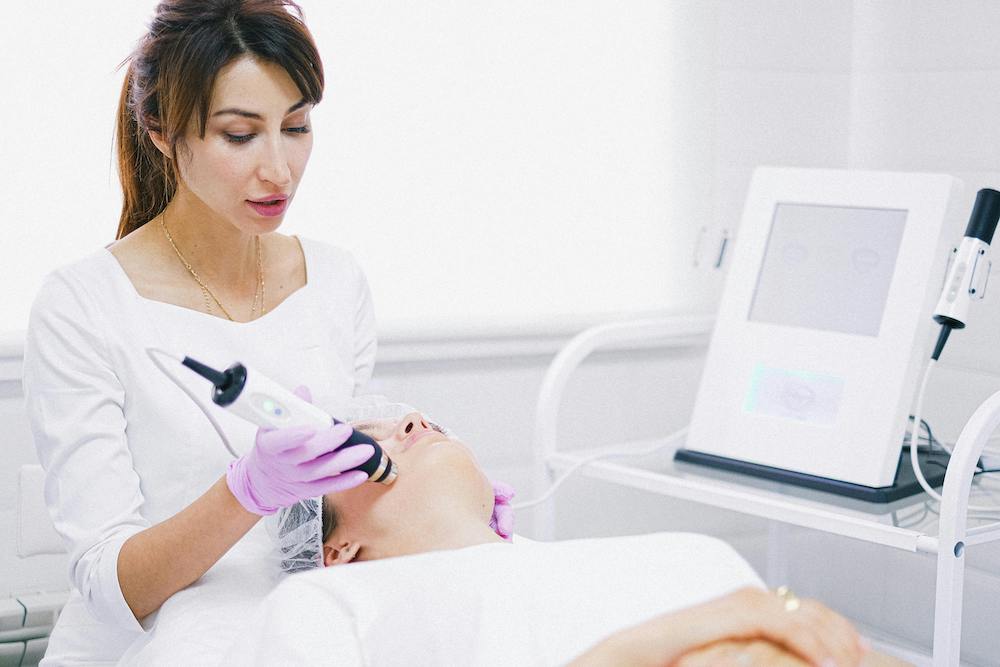
Understanding HIPAA Compliance in Social Media
Now, let’s talk about the elephant in the room – HIPAA compliance. When it comes to social media marketing, you need to really understand what counts as protected health information (PHI) and how to avoid accidental violations. It’s not rocket science, but healthcare organizations need to put solid strategies in place to make sure all their social media activities follow federal regulations. No shortcuts here.
What is HIPAA and Why It Matters
So what exactly is HIPAA? The Health Insurance Portability and Accountability Act sets national standards for protecting sensitive patient health information. For healthcare organizations using social media, HIPAA compliance basically means making sure that no patient information gets disclosed without proper authorization – whether it’s intentional or accidental. It’s that simple, but it’s also that important.
The 18 Types of Protected Health Information
Here’s the thing – you need to know the complete list of PHI identifiers if you want to stay compliant with healthcare social media marketing. These identifiers include:
- Patient names, including nicknames and initials
- Dates related to individuals (birth, admission, discharge, death)
- Geographic information smaller than state level
- Phone numbers, fax numbers, and email addresses
- Social Security numbers and medical record numbers
- Health plan beneficiary numbers
- Account numbers and certificate/license numbers
- Vehicle identifiers and serial numbers
- Device identifiers and serial numbers
- Web URLs and IP addresses
- Biometric identifiers, including fingerprints and voice prints
- Full face photos and comparable images
- Any other unique identifying numbers or codes
Common HIPAA Violations in Social Media
Let’s be real – healthcare organizations need to watch out for common social media HIPAA violations to avoid costly mistakes. We’re talking about things like sharing patient photos without consent, posting about specific patients or cases, discussing patient information in public forums, and failing to secure social media accounts properly. These might seem like small things, but they can cost you big time.
Legal Consequences of HIPAA Violations
Here’s the scary part – HIPAA violations can result in some serious financial penalties, ranging from $127 to $63,973 per violation, depending on how negligent you were. For healthcare organizations, these violations don’t just hit your wallet – they can damage your reputation, lead to loss of patient trust, and result in additional regulatory scrutiny. Not worth the risk.
HIPAA-Compliant Social Media Strategies
So how do you actually get HIPAA-compliant social media marketing right? It takes careful planning, solid policies, and ongoing staff training. Healthcare organizations need to develop strategies that balance marketing effectiveness with strict privacy protection. It’s a delicate balance, but it’s totally doable.
Content Moderation and Approval Processes
Before anything else, you need to put in place effective content moderation processes for HIPAA-compliant social media marketing. All content needs to pass through a review process from designated persons before it is published to make sure that no unintentional leakage of any PHI occurs. Text, images, video, and any user content that is to be published all fit in here. You can use content moderation software that would automatically make the review process and ensure that all content is HIPAA-compliant before it goes live. Think of it like placing a safety net.
Patient Consent and Privacy Protection
Here’s a big one – health organizations have to get express written consent from patients before sharing any patient-related information. Such consent should, in particular, specify use of such information and should allow patients to withdraw consent at their own volition. Even with consent, organizations should be careful when sharing patient information. Better safe than sorry, right?
Staff Training and Social Media Policies
Staff education is also necessary – adequate training in HIPAA regulations and in do’s and don’ts of social media is key to preventing violations. Social media policies should also be put in place by healthcare organizations and outline acceptable use, illegal use, and consequences for failure to comply with policies. Everyone should be on the same page.
Platform-Specific Considerations
Here’s something important to remember – Here is a key thing to consider – different social networks present different HIPAA challenges. Health organizations should understand the privacy settings, methods of acquiring data, and terms of service for each network in decision-making, which networks to use, and which networks are appropriate for their use. Networks are not the same.
Facebook and Instagram: These platforms offer robust privacy controls and business tools that can help healthcare organizations maintain compliance while engaging with patients. However, organizations must be cautious about user-generated content and ensure proper moderation of comments and posts.
LinkedIn: Often preferred by healthcare organizations for professional networking and B2B communications, LinkedIn provides a more controlled environment for healthcare content. However, the same HIPAA compliance rules apply to all content shared on the platform.
Twitter: The real-time nature of Twitter requires extra vigilance for healthcare organizations. The platform’s public nature makes it essential to carefully review all content before posting and monitor for any potential HIPAA violations in responses or mentions.
Content Creation Best Practices
When it comes to creating social media content, healthcare organizations should stick to general health information, wellness tips, and educational content instead of specific patient cases. Content should be written in a way that provides value without risking patient privacy. This approach helps healthcare providers build trust with their target audience while sharing valuable insights about health topics and medical treatments. It’s all about finding that sweet spot.
Key Guidelines for HIPAA-Compliant Content Creation:
- Use general health information rather than specific patient stories
- Focus on preventive care and wellness education
- Avoid mentioning specific medical conditions or treatments
- Include disclaimers about general information purposes
- Ensure all images and videos are properly licensed or original
- Review all content with compliance officers before publishing
- Maintain professional tone while remaining approachable
- Include clear calls-to-action that don’t compromise privacy
Tools and Solutions for Healthcare Social Media
Let’s talk tools – healthcare organizations need specialized tools and solutions made specifically for HIPAA-compliant social media management. These tools help ensure compliance while streamlining social media operations and maintaining a strong social media presence that supports patient care and engagement. For healthcare marketers looking to implement effective marketing strategies, the right tools can make all the difference in achieving their healthcare marketing objectives. It’s like having the right equipment for the job.
Juicer’s Content Aggregation Features
Juicer provides healthcare organizations with a comprehensive social media aggregation and management platform that can help streamline content curation and display. The platform offers advanced content moderation capabilities, allowing healthcare organizations to maintain control over what content gets displayed on their websites and social walls.
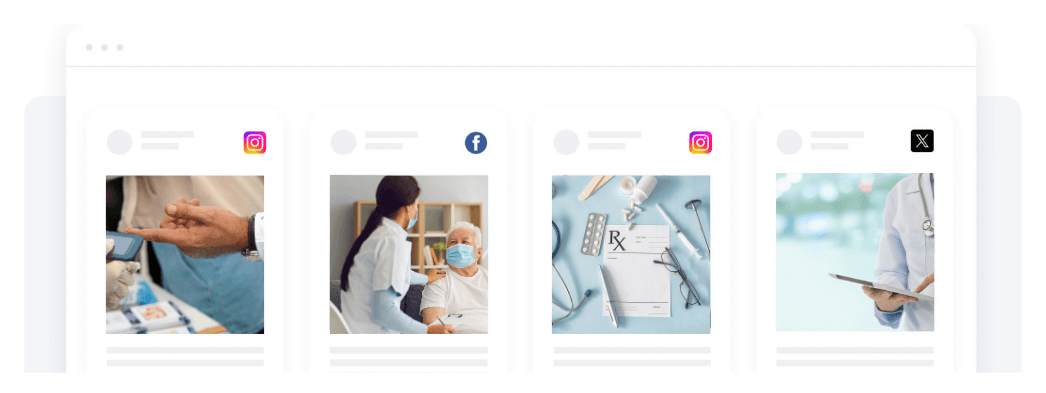
Content Aggregation and Moderation
Juicer’s content aggregation features allow healthcare organizations to collect social media content from multiple sources while maintaining strict control over what gets published. The platform’s moderation tools help filter and approve content before it goes live, enabling healthcare organizations to maintain quality standards. Healthcare practices can also use social walls to display curated content on their websites and in waiting areas, while ensuring all displayed content meets their compliance standards.
Social Media Management for Healthcare
Healthcare organizations can leverage Juicer’s aggregation and display features to streamline their social media content curation while maintaining compliance. The platform provides tools for monitoring engagement and analyzing the performance of displayed content, helping healthcare organizations understand which content resonates with their audiences.
Best Practices and Case Studies
Here’s the thing – learning from successful healthcare organizations can help others put effective HIPAA-compliant social media strategies into practice. These examples show how proper planning and execution can lead to successful outcomes. It’s like learning from the best.
Real-World Success Stories
Healthcare organizations that have successfully implemented HIPAA-compliant social media marketing often share common characteristics: clear policies, comprehensive training, and careful content planning. These organizations focus on educational content, community engagement, and transparent communication while maintaining strict privacy standards. A 2022 healthcare marketing surveyfound that 68% of healthcare organizations reported increased patient engagement after implementing structured social media marketing programs. These success stories demonstrate how effective healthcare marketing strategies can drive patient acquisition and build lasting relationships with prospective patients.
Common Mistakes to Avoid
Here’s what you want to avoid – healthcare organizations should steer clear of common pitfalls like sharing patient photos without consent, discussing specific cases publicly, and failing to secure social media accounts properly. Regular audits and policy updates help prevent these mistakes and ensure ongoing compliance. It’s all about staying vigilant.
Measuring Success
Here’s how you measure success – healthcare organizations should set up clear metrics for measuring social media marketing success while keeping HIPAA compliance in check. These metrics might include engagement rates, website traffic, appointment bookings, and patient satisfaction scores, all measured without compromising patient privacy. Healthcare providers can also track how their marketing efforts translate into new patients and improved patient care outcomes. It’s all about connecting the dots.
Conclusion
So what’s the bottom line? Healthcare social media marketing brings both opportunities and challenges for healthcare organizations. By implementing comprehensive HIPAA compliance strategies, healthcare practices can successfully leverage social media platforms to engage with patients, build their brand, and provide valuable health information while maintaining the highest standards of patient privacy protection. It’s definitely doable.
The key to success comes down to understanding HIPAA requirements, developing clear policies and procedures, providing good staff training, and using the right tools and solutions made for healthcare organizations. With proper planning and execution, healthcare social media marketing can become a powerful tool for patient engagement and community building. Healthcare brands that invest in social media in healthcare as part of their overall healthcare marketing strategy often see significant improvements in patient acquisition and brand awareness. It’s worth the effort.
For healthcare organizations looking to implement HIPAA-compliant social media marketing, Juicer provides the tools and expertise needed to navigate these challenges successfully while maintaining compliance and achieving marketing objectives.

